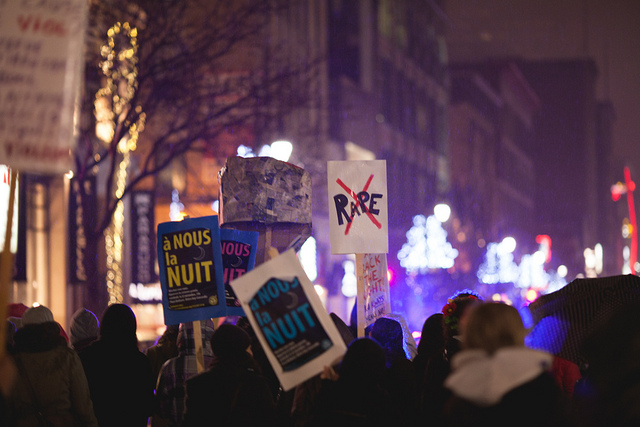It is more dangerous to be a woman than a man in Canada today.
The most recent survey of violent victimization in the country found that women are now more likely to be victims of violent crime than are men. And the reason is this: while most violent crime has declined over the past decade in Canada, one violent crime has not: sexual assault. Because women make up the majority of victims of sexual assault (87 per cent), they are not sharing in the benefits of declining crime rates.
Every December 6, we remember the women who lost their lives in the brutal and targeted attack at École Polytechnique. We say their names aloud. We remember, so that the violence will not be repeated.
Have we learned from the past?
The medical journal The Lancet recently published the most comprehensive assessment of interventions in violence against women ever conducted. Researchers looked at every form of intervention across every country from which research was available. They considered everything from public awareness campaigns to court mandated counseling for perpetrators, to police stations staffed exclusively with women. They asked one question: “if you do this thing, do rates of violence against women go down?”
In too many cases the answer was “no.” For example, the interventions used with perpetrators most often involve a few sessions of court-mandated counselling. Which have no measurable correlation to preventing recidivism.
In some cases that answer was “we don’t know.” For example, there is evidence that there is a relationship between poverty, access to paid work, and violence, but the relationship is complex and it isn’t clear what kinds of interventions have the greatest impact.
In some cases, the answer is “yes.” We actually know quite a bit about the perpetrators of sexual assault and the risk factors that make someone likely to become a perpetrator. We know that perpetrators tend to be young: “between a half and three-quarters of men who ever rape first do so as teenagers.” That means that interventions need to start early. You know, before Frosh Week.
We know that interventions that address men and women (and boys and girls) together are more effective. We know that longer-term interventions, particularly when they address both individuals and communities are more effective than short-term interventions. We know that social media platforms like Hollaback have resulted in women being more likely to report sexual assault and to seek support.
We’ve learned a lot since 1989. The question is, why aren’t we doing more with what we’ve learned?
If we said aloud the names of all the women in Canada who have been sexual assaulted in the past five years it would take 32 days. That’s 768 hours. That’s 553,000 women.
So, today on December 6, let us share a moment of silence. Let us read the names of the women who were killed and injured on that day. Let us consider the young lives lost and imagine the suffering of the injured, the survivors, and their families.
And then let us wake up December 7 and have a REALLY LOUD CONVERSATION ABOUT SEXUAL ASSUALT.
Kate McInturff is a senior researcher with the Canadian Centre for Policy Alternatives. You can follow Kate on Twitter @katemcinturff.
This article was first published on the CCPA’s Behind the Numbers.
Photo: Howl Arts Collective/flickr
Like this article? rabble is reader-supported journalism. Chip in to keep stories like these coming.




